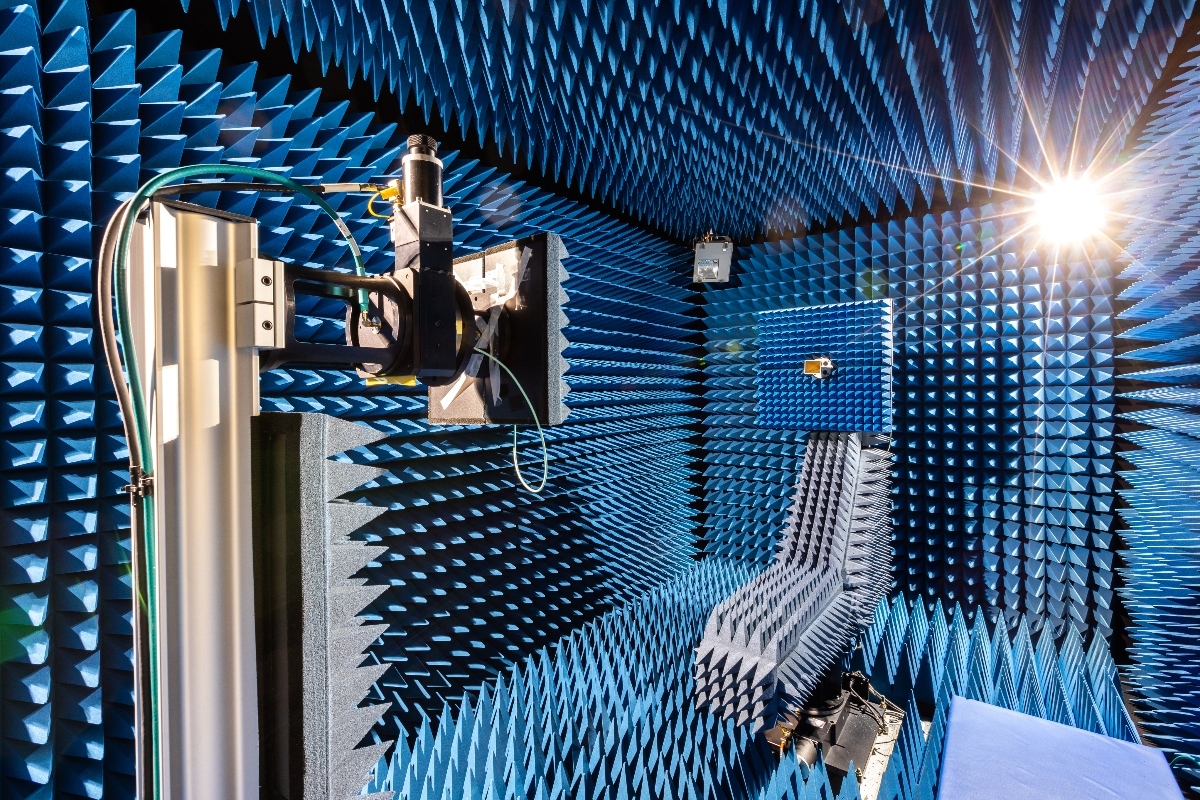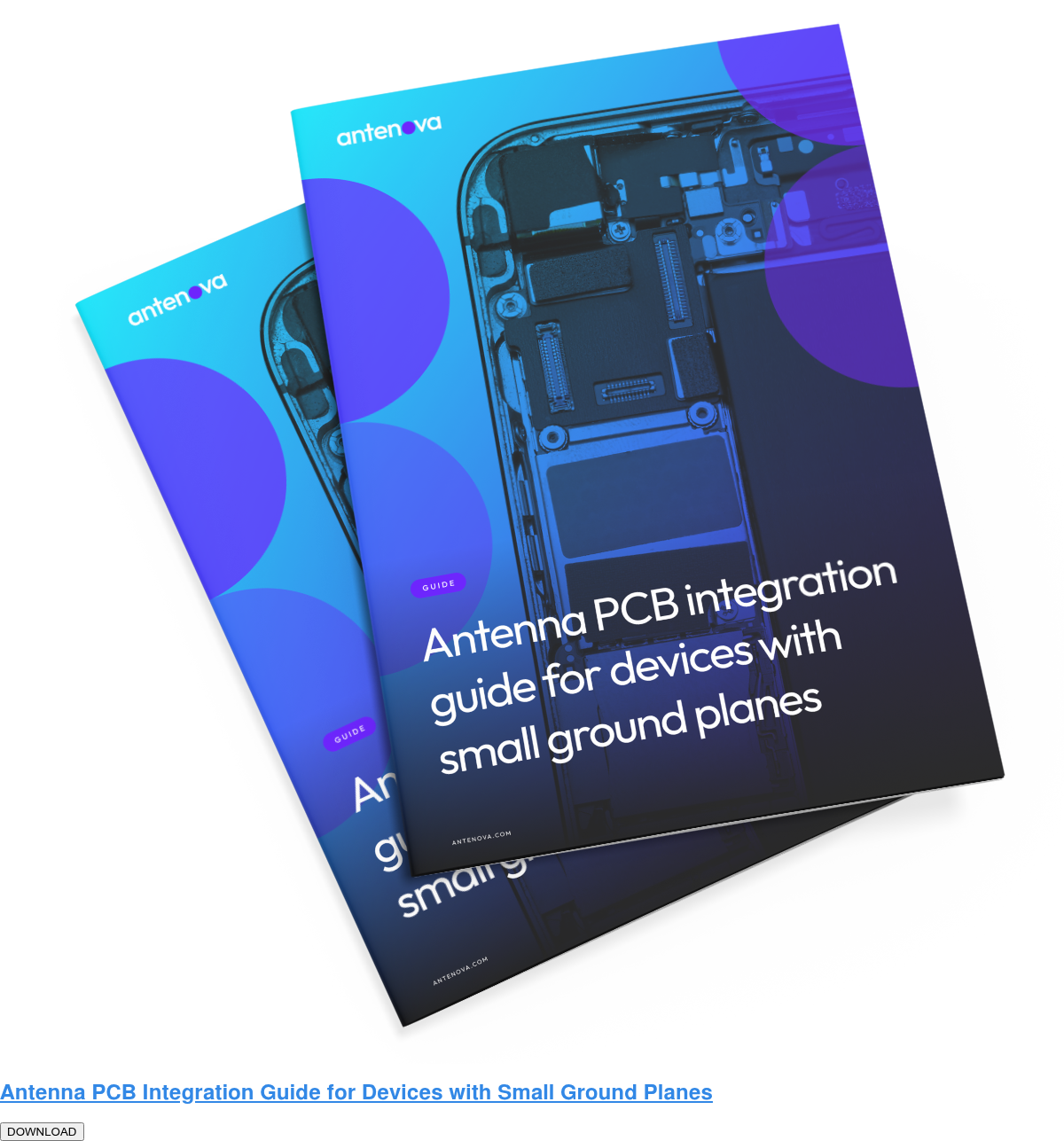Over-the-Air (OTA) testing defines how wireless devices perform once they leave the controlled conditions of a development lab. The testing process evaluates the full communication system, including the antenna, radio and enclosure.
For product designers, understanding OTA measurements is essential for achieving compliance, consistent connectivity, and dependable field performance.
Why OTA matters
OTA testing assesses how a wireless device radiates and receives signals in an environment that replicates free space. Engineers use anechoic chambers lined with absorptive material to remove reflections and external interference. These chambers enable accurate measurement of key parameters such as efficiency, gain, total radiated power (TRP), total isotropic sensitivity (TIS) and radiated spurious emissions (RSE).
The testing process provides data on the actual behavior of a complete device. It includes the effects of packaging, materials, internal components and housing geometry. This is important for designers creating compact, integrated products where direct cable testing is impractical.
TRP (Total Radiated Power)
Total Radiated Power (TRP) represents the combined power radiated from a device’s antenna across all directions. It quantifies the efficiency of the transmitter when operating at full power. TRP measurements integrate power density over a spherical range surrounding the device, creating a complete picture of transmission strength.
Design relevance
High TRP values indicate strong and uniform signal radiation. Low TRP values can reveal signal losses due to factors like component interference or poor antenna placement. Consistent TRP across operating bands supports compliance with regional and carrier certification standards.
Product designers should consider TRP early in the development cycle. The antenna position, matching network and enclosure design all influence TRP. Simulation and early-stage measurement can also help verify that integration decisions meet target performance values.
TIS (Total Isotropic Sensitivity)
Total Isotropic Sensitivity (TIS) measures how effectively a device receives weak signals from all directions. It captures the minimum detectable signal power that the receiver can process whilst maintaining an acceptable error rate.
Design relevance
TIS indicates the overall quality of the receive chain. Antenna efficiency, impedance matching, front-end noise and housing detuning can all affect sensitivity. Low TIS values correspond to a reduced ability to detect faint or distant signals.
A well-performing wireless design maintains stable TIS across multiple operating angles and frequencies. Product designers can further optimise this by using low-loss materials, shielding from digital noise sources and ensuring uniform radiation patterns through careful antenna integration.
RSE (Radiated Spurious Emissions)
Radiated Spurious Emissions (RSE) describe unwanted signals emitted from a device outside its intended frequency range. These emissions can originate from various different places like harmonics, mixing products or even digital noise coupling through the antenna.
Design relevance
RSE measurement ensures that devices meet global electromagnetic compatibility (EMC) and spectrum regulations (e.g EU’s EMC Directive). These have been established as excess emissions can interfere with adjacent channels and degrade the signal of nearby devices.
Effective RSE management begins with clean RF design. Filtering, shielding and isolation between high-speed digital circuits and RF sections can help limit unwanted radiation. On top of this, designers should validate these measures through early pre-compliance scans before full certification testing.
Design decisions that can shape OTA performance
Antenna integration majorly determines how a device performs under OTA testing. Factors like the position of the antenna, its ground reference,and nearby materials all influence TRP, TIS and RSE results. OTA measurements capture these effects and show how well the integrated system radiates, receives and maintains spectral control.
When the antenna is tuned and positioned with OTA performance in mind, certification becomes smoother and field reliability improves. The testing process verifies that the chosen design operates efficiently within its enclosure and interacts correctly with surrounding components. This connection between integration and measurement highlights the importance of choosing the right antenna for your device
Building wireless performance that lasts
OTA testing defines the measurable standard of wireless performance. It confirms that design choices, materials and integration methods produce an antenna system that performs as intended in real environments. Reliable results in TRP, TIS and RSE demonstrate that a product has achieved balanced radiation, sensitivity and spectral control.
Antenova supports this process through antenna solutions engineered for efficient integration and predictable performance. Each design in the Antenova range is developed to maintain stability across device types, enclosures and operating conditions. With precise engineering and a strong understanding of OTA principles, Antenova helps product designers create connected devices that meet certification requirements and deliver consistent connectivity throughout their lifespan.
To find out more about our products, browse our range of antenna solutions here. For more insight into antenna integration for small devices, download our guide below.




